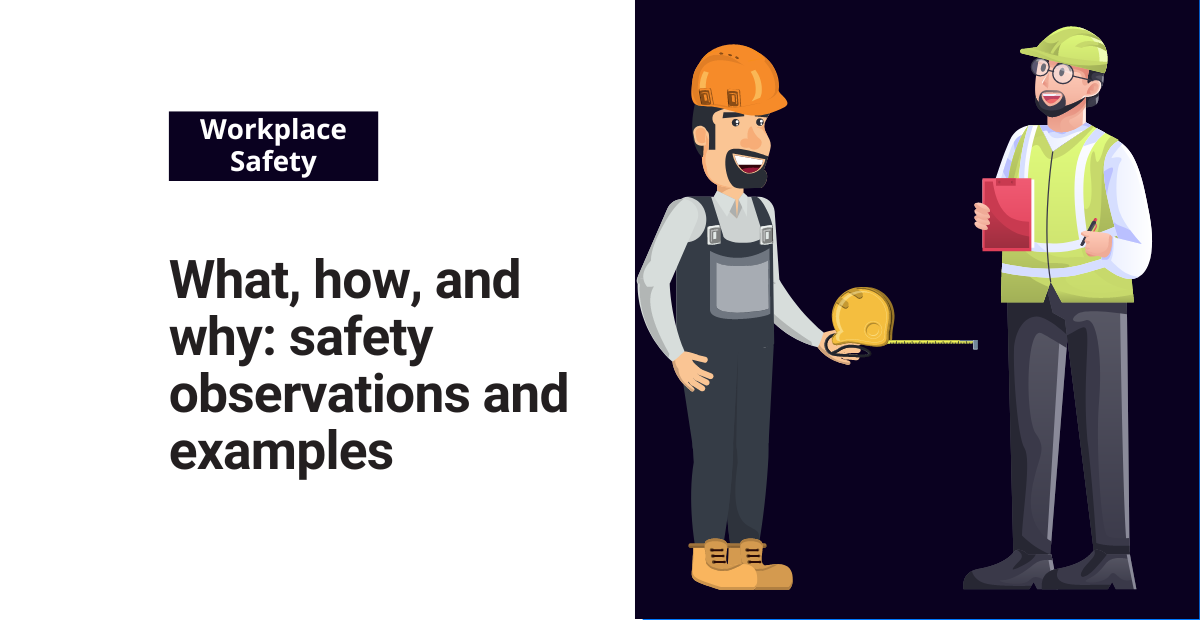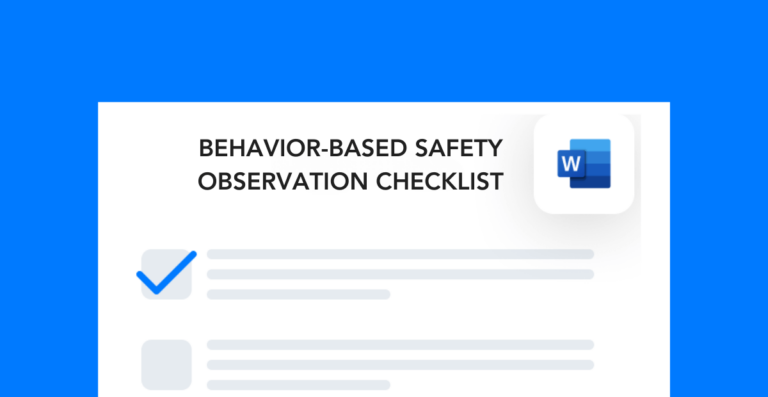When employees see that safety is taken seriously, they are more likely to continue safe work practices. In this post, you’ll find a safety observation example that you can use to practice your own approach.
Note that when performing safety observations, it’s important to focus on dialogue, not discipline. Sometimes corrective actions may be necessary, especially when you see dangerous behaviors.
However, employees should not be penalized for the way they respond to questions during the process. Finally, safety observations should focus on safety for the tasks observed, not compliance with all safety rules.
Performing safety observations
When performing observations, you may choose to use forms or checklists for different scenarios or work areas. These forms can be part of a continuous improvement program for safety purposes. However, as a supervisor, listening to employees’ views should be the most crucial part of the observation, not just checking off boxes.
Supervisors should ask open-ended questions (why, how, what, when, who) to gain an understanding of the task, not in an attempt to make an example of what they believe is wrong. Remember, observations should be about solving safety problems collaboratively, not trying to place blame!
Safety observation example scenario
The scenario below involves a supervisor watching an employee clean a tank with solvent. The supervisor asks questions related to the task, such as appropriate personal protective equipment, safe ventilation, and working procedures.
Supervisor: Hi! I see you’re on tank-cleaning duty today. Do you mind if I perform a safety observation? I’d just be asking you some questions while you work.
Employee: Sure, no problem. What do you need to know?
Supervisor: I have a form here with the basics, but overall I’d like to know how you work safely while doing this task and if there’s anything you think should change. What PPE do you use, for starters?
Employee: I use a protective suit, shoe covers, gloves, and safety glasses. If I spilled solvent, I’d want as little of it to get on me as possible. I don’t technically need a respirator because we always have to check if the air is safe to breathe before going in.
Supervisor: That makes sense. Also, I know that confined spaces are dangerous to enter because of ventilation issues, but I don’t know if those rules apply to tanks. How does that work?
Employee: The tank has to be isolated after it’s empty. Once safety checks it for proper ventilation, we get a permit. Basically, we check the atmosphere in the tank, and if it’s safe, I can go in while one of them is watching me. That makes sure we can get help if anything goes wrong, like if I passed out. (Employee speaking points towards a few of the other employees across the room).
Supervisor: Okay, I see. Let me backtrack for just a second, could you explain a bit more about what isolation is?
Employee: Yeah, isolation means we have to make sure the tank is empty and then bond and ground it like any of the other flammable chemical drums in storage to prevent sparks. The air shouldn’t be flammable or explosive since we have to check that. We also have to lock out the mixers and everything else that controls flow into the tank to avoid any incidents.
Supervisor: Great, that’s good to know that the mixer shouldn’t be able to run. How do you check to make sure the air isn’t explosive or flammable? If it is, what do you do about that?
Employee: We use a detector to check if there are gas concentrations that are unsafe to work in. If there are, we would have to contact safety and our supervisor on shift, but I haven’t had to do that yet.
Supervisor: Got it. When you’re done cleaning everything, how do you put the tank back online?
Employee: So, after we finish cleaning, we remove the locks and tags off the machinery, and we remove the bonding and grounding equipment. Then if everything’s good to go, we start back up.
Supervisor: Awesome. Thanks for running through that with me, as far as I can tell we hit all the main points. Is there anything else you’re concerned about safety-wise for this task that we didn’t address? Just to reassure you, you won’t get in trouble for speaking up.
Employee: No, I don’t think so.
Supervisor: All right! Thank you for taking the time to do this. Is it okay if I watch while you’re cleaning the tank?
Employee: You’re welcome, absolutely!
Recapping the example scenario
Let’s recap the safety observation example scenario and the main points to remember.
The supervisor asked the employee open-ended questions about the task and gave the employee time to explain. The employee explained all parts of the task and their associated safety concerns with prompting from the supervisor.
In addition, there was a positive interaction and discussion between the supervisor and the employee. Finally, the employee understood that there would not be repercussions for bringing up any potential issues or concerns. At the end of the observation, the supervisor thanked the employee for their time.
Making these kinds of interactions positive and meaningful is crucial for creating a strong safety culture within your organization.




